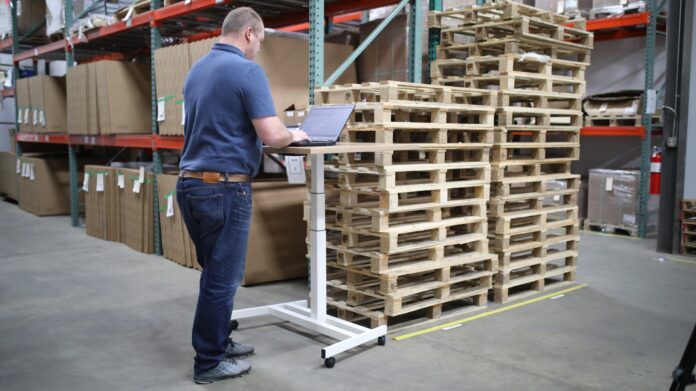Warehouse work can be highly rewarding and profitable, but it also comes with unique challenges related to workplace safety. With traditional hazardous exposures still lingering in many warehouses, including noise and dust, occupational hazards that affect the physical health of warehouse workers remain a top priority for employers. Taking the right steps today to ensure safer working conditions can help reduce future costs incurred through medical expenses or decreased productivity due to injury while improving overall job satisfaction amongst warehouse workers. Here are six practices you can use immediately to create a safer environment in your warehouse.
1. Proper Training
When it comes to safety in a warehouse, proper training is paramount. It’s about following rules and regulations and equipping employees with the necessary skills and knowledge to handle potentially dangerous situations. Proper lifting techniques are also crucial to avoiding injuries resulting in long-term health problems.
Employees should also be trained on proper pallet handling techniques, including stacking and moving pallets safely to prevent injuries. The process of loading pallets onto a truck or into storage should also be done with caution, using the proper equipment. By investing in comprehensive training programs for all employees, employers can create a safer work environment and ultimately prevent accidents from occurring.
2. Personal Protective Equipment (PPE)
In any workplace, safety should always be the top priority. Personal Protective Equipment (PPE) plays a significant role in ensuring that employees are protected from potential hazards they may encounter while on the job. PPE can range from hard hats that protect the head from falling debris to steel-toed shoes that prevent foot injuries.
Safety glasses and gloves are also essential pieces of PPE to help prevent eye and hand injuries while working. Employees must wear appropriate PPE for their job tasks to ensure maximum protection against workplace hazards. By investing in proper PPE, employers can demonstrate their commitment to the safety and well-being of their workforce.
3. Clear Communication
Effective communication ensures that all employees know the potential hazards in the warehouse and how to prevent them. One way to encourage clear communication is by establishing an open-door policy that allows employees to report safety concerns or hazards to management without fear of retaliation. Regular safety meetings and training sessions promote communication by providing a platform for employees to share their experiences and feedback on safety issues.
Additionally, using visual aids such as signs and posters can help communicate safety protocols, emergency procedures, and reminders to employees. Encouraging teamwork and collaboration among employees can also foster a culture of safety where employees look out for one another and communicate potential hazards or safety concerns.
4. Regular Inspections
The importance of regular inspections cannot be overstated when it comes to maintaining a safe and hazard-free environment in a warehouse. Undetected safety hazards can lead to accidents and injuries, potentially damaging property and personnel. Conducting regular inspections helps identify any potential problem areas and allows corrective action to be taken promptly, reducing the chances of incidents occurring.
Not only does this keep employees safe, but it also helps to maintain the integrity of the products and equipment stored in the warehouse. Take action before an accident. Regular inspections are essential for creating a safe and secure work environment.
5. Emergency Procedures
Nothing is more important than the safety and well-being of employees. That’s why having established emergency procedures is essential in any workplace. These procedures not only protect the employees but also ensure that any emergencies are handled smoothly and efficiently.
The first step in creating these procedures is to develop an evacuation plan outlining the different routes that can be taken in an emergency. In addition, all employees should be trained in first aid procedures if an injury occurs. Finally, having a list of emergency contacts will expedite any necessary actions. Keep your employees safe by establishing and communicating these emergency procedures to all staff members.
6. Proper Equipment Maintenance
All equipment used in the warehouse, including forklifts, pallet jacks, conveyors, and other machinery, should be properly maintained and inspected regularly to ensure that it is safe to operate. This includes conducting routine checks for wear and tear, such as inspecting belts, brakes, and chains and checking fluid levels and tire pressure. Any damaged or malfunctioning equipment should immediately be removed from service and repaired or replaced to prevent potential accidents.
Regular maintenance ensures that the equipment is safe to use, helps extend its lifespan, and prevents breakdowns that can cause delays in warehouse operations. Additionally, providing employees with the necessary training and resources to maintain equipment properly, such as cleaning and lubricating procedures, can help prevent malfunctions and increase equipment efficiency.Â
Implementing a comprehensive maintenance program not only safeguards the operational safety of warehouse equipment but also fosters an environment where employees are actively engaged in upholding best practices and warehouse ideas. Organizations can bolster equipment reliability, minimize disruptions, and optimize overall efficiency in their warehouse operations by prioritizing ongoing training and resource allocation.
The safety of employees should always be the top priority in any warehouse. By implementing these safety measures and procedures, employers can help ensure their warehouses remain safe and hazard-free. So don’t wait for an accident to happen—take action now and keep your employees safe.






























